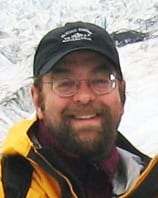Sam Laney Receives NASA New Investigator Award
The New Investigator Program was established in 1996 to encourage the integration of Earth system science research and education in the early development of scientists' and engineers' careers. It is NASA’s equivalent to the NSF CAREER award and the ONR Young Investigator Award. A total of 71 proposals were submitted in 2009, and Laney is one of just 18 chosen to receive the highly competitive award this year.
Laney will receive up to $120,000 per year for a period of three years to fund his project, “Deciphering the Natural Fluorescence Dynamics of Phytoplankton.” Photosynthetic plankton in the ocean play a critical role in planetary biogeochemistry and its carbon cycle, and Laney’s project will outfit an open-ocean mooring with radiometers to capture multi-year climatologies of phytoplankton natural fluorescence and related ocean color properties.
“The fluorescence that phytoplankton naturally emit during photosynthesis contains considerable information about their health and productivity,” Laney said. “WHOI provides a great environment to collaborate with physical oceanographers to develop new ways to monitor phytoplankton in the ocean in real time, such as this project with the WHOTS8 mooring off Hawaii.”
In addition to the research, this NASA award also supports an educational component. Laney will work with outreach and education specialists at WHOI’s Ocean Science Exhibit Center to develop an interactive web-based kiosk about ocean color and phytoplankton photosynthesis.

